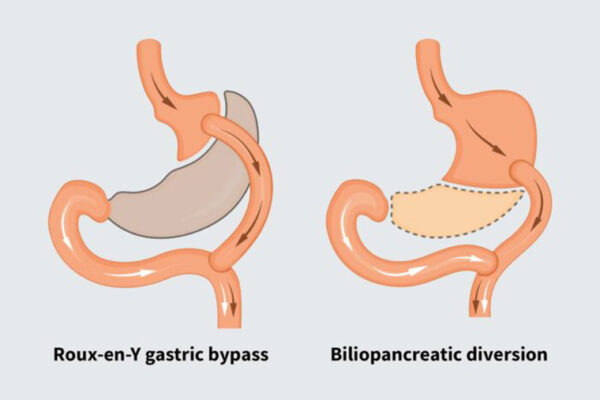
Where fat comes from determines whether the body can metabolize it effectively. Researchers at Washington University School of Medicine in St. Louis have found that the “old” fat stored in the body’s peripheral tissues — that is, around the belly, thighs or bottom — can’t be burned efficiently unless “new” fat is eaten in the diet or made in the liver.
The research team developed genetically engineered mice missing an important fat synthesizing enzyme in the liver. As a result, the mice, called FASKOL mice (Fatty Acid Synthase KnockOut in Liver), could not produce new fatty acids in the liver. Because liver fatty acids are vital for maintaining normal sugar, fat and cholesterol metabolism, these mice must take in dietary fat to remain healthy.
Reporting in the May issue of the journal Cell Metabolism, the researchers say these mice developed fatty liver disease when placed on a zero fat diet.
“When we took dietary fat away from the FASKOL mice, their livers quickly filled with fat,” says senior investigator Clay F. Semenkovich, M.D., professor of medicine and of cell biology and physiology. “Their ‘old’ fat stores mobilized to the liver, but their livers could not initiate fat burning, and the fat just accumulated. We concluded that to regulate fat burning, the liver needs ‘new’ fat.”
New fat is the fat that is consumed in food or is newly made in the liver as glucose is converted to fat by fatty acid synthase, the enzyme missing in the FASKOL mice. When the system takes in high amounts of glucose, fatty acid synthase in the liver makes it into new fat.
In addition to fatty livers, the transgenic mice developed low blood sugar levels on the zero fat diet. Both symptoms were reversed with dietary fat, and in fact on a normal diet, the transgenic mice were no different than normal mice in terms of body weight, body fat, metabolic rate and food intake.
The effect of added dietary fat was duplicated when the mice were treated with a drug that activates a protein called PPAR-alpha. Liver fat declined to normal in the FASKOL mice within 10 days of receiving the PPAR-alpha activating drug.
PPAR-alpha is a protein found in all mammals and is central to metabolic processes that extract energy from dietary components like carbohydrates and fats. Because the PPAR-alpha activating drug did the same work that dietary fat does, the investigators concluded that new fat may be crucial to initiating the PPAR-alpha pathway.
“Scientists have argued that PPAR-alpha is activated by fats,” says Semenkovich, who also directs the Division of Endocrinology, Metabolism and Lipid Research and is a staff physician at Barnes-Jewish Hospital. “But we’ve never known which fats or where they come from. This study suggests that new fat is a ‘key’ that unlocks the ‘door’ for PPAR-alpha in the liver.”
The liver is very important for processing nutrients consumed in the diet and sending them on to the rest of the body. Abnormal processing of glucose or lipids in the liver contributes to problems of type 2 diabetes and atherosclerosis, and fatty liver disease often is seen in people who are obese or suffer from insulin resistance.
“There’s also good evidence that the liver plays a key role in mediating cardiovascular risk through the secretion of multiple proteins associated with inflammation,” Semenkovich says. “In these mice we found that when too much fat got into the liver, there was excessive inflammation.”
With Manu Chakravarthy, M.D., Ph.D., an endocrinology fellow and first author of the paper, Semenkovich found that new fat seems to solve those problems.
The research team is now trying to identify fats that could be given in small amounts to activate the PPAR-alpha pathway. They also are studying liver cells and fat cells to see how the liver can tell the difference between old fat and new fat.
Eventually, Semenkovich believes these findings could lead to more effective strategies for the treatment of obesity, type 2 diabetes and other metabolic problems. For now, he says that dieters who want to lose fat stored in peripheral tissues may find it useful to take in small amounts of dietary fats, such as fish oils, that might more effectively activate PPAR-alpha and fat burning pathways through the liver.
Chakravarthy MV, Pan Z, Zhu Y, Tordjman K, Schneider JG, Coleman T, Turk, J, Semenkovich, CF. “New” hepatic fat activates PPAR-alpha to maintain glucose, lipid and cholesterol homeostasis, Cell Metabolism; vol. 1, pp. 309-322, May. 2005. www.cellmetabolism.org
This research was funded by the National Institutes of Health.
Washington University School of Medicine’s full-time and volunteer faculty physicians also are the medical staff of Barnes-Jewish and St. Louis Children’s hospitals. The School of Medicine is one of the leading medical research, teaching and patient care institutions in the nation, currently ranked third in the nation by U.S. News & World Report. Through its affiliations with Barnes-Jewish and St. Louis Children’s hospitals, the School of Medicine is linked to BJC HealthCare.


